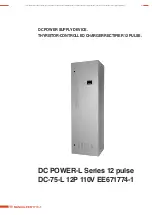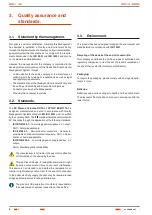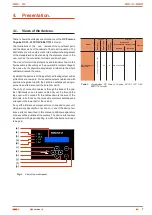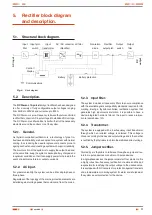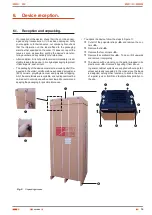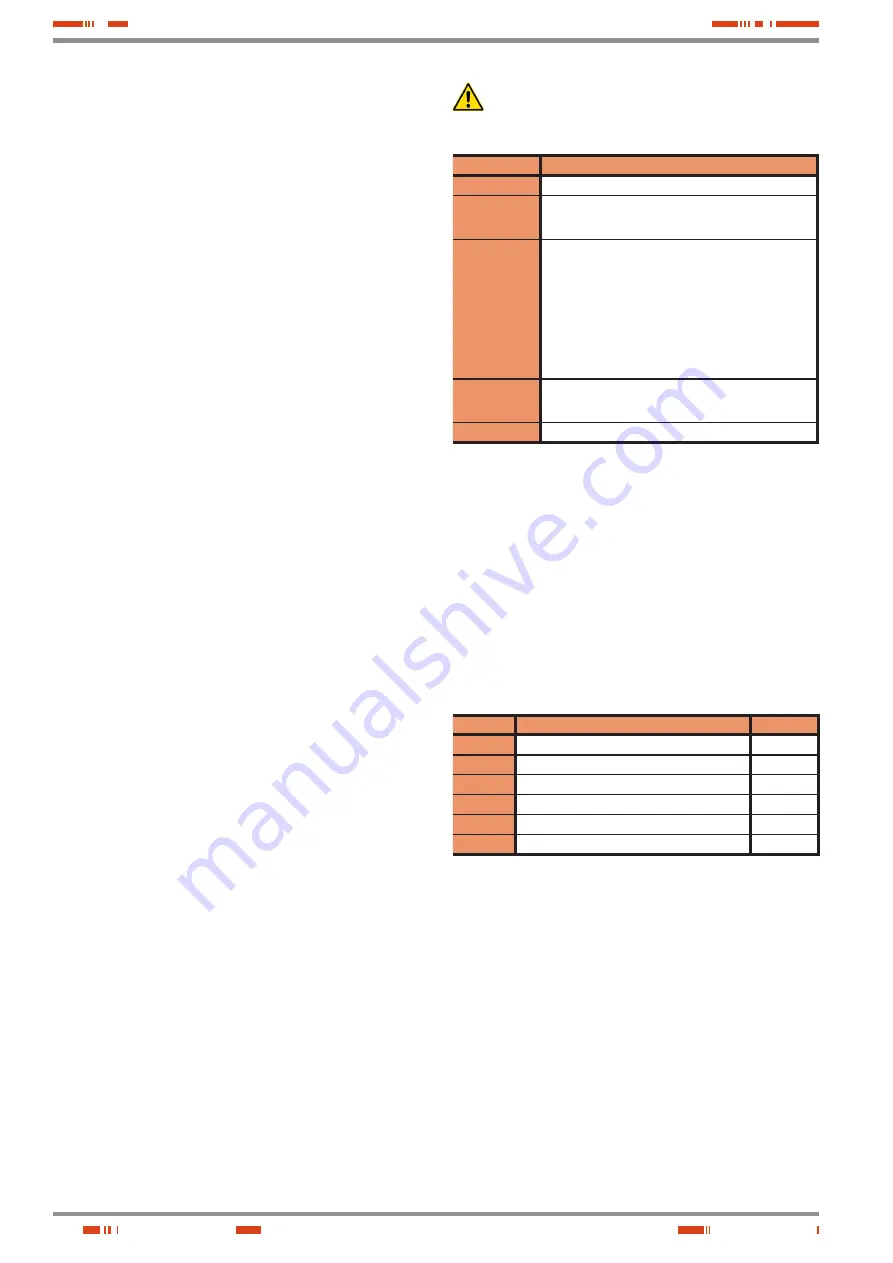
12
5.2.6. Battery.
The device will function as a stand-alone power source even
when the AC input mains fail, supplying voltage to the load con-
nected to the output of the device by means of its backup battery.
To keep the battery in an optimum state and ensure a maximum
life, the system monitors the current and voltage of the battery at
all times, as well as the temperature of the battery room in order
to enable the appropriate compensations to be made.
The system can charge all kinds of PbCa or NiCd batteries, ei-
ther sealed or with maintenance. Batteries with maintenance can
optionally include in their cells an electrolyte level detector to pro-
vide low level alarms.
The rectifier cabinet has battery fuses at both poles, which, in ad-
dition to providing the respective protection, facilitate connection
in systems with battery banks external to the device.
5.2.7. Output filter.
For output ripple reduction, an LC filter is incorporated to keep
the ripple voltage and current levels within the established limits
and ensure correct operation of the output loads and the ex-
pected life of the battery.
The system also includes all necessary filters to ensure compli-
ance with the electromagnetic compatibility standards required
for CE marking.
5.2.8. DC output.
The isolation offered by the transformer allows a floating output
with respect to the input, which enables earthing of either of the
two output terminals (poles).
5.2.9. Control/Display.
The vital constants of the source are controlled digitally through a
microprocessor which is also responsible for managing the set-
tings and measurements shown on the LCD display.
All rectifiers are identical in operation regardless of the format,
power and input/output voltage.
5.2.9.1. Control.
In normal operating mode, a PID is responsible for regulating the
desired output voltage.
By means of an automatic priority change system (override con-
trol), the control is transferred to another current PID when one of
the current limits is exceeded: batteries or rectifier.
A selective control enables automatic switching between the two
currents to ensure that neither of the two limits is ever exceeded.
5.2.10. Relay interface (X32).
All systems incorporate as standard a relay interface with four
relays (*), a battery temperature sensor for measuring and com-
pensating the float voltage in relation to it and an Ethernet/SNMP
adapter slot, plus three additional relays, an electrolyte level de-
tection input for NiCd batteries and ports RS-232 and RS-485 in
their extended COM version.
(*) The relay table corresponds to the extended COM ver-
sion (relays from 1 to 9).
The standard relays included on the control board are 10, 11, 12
and 13.
Relay nº.
Description of relay programming
1
Reserved
2 and 10
Groups the following alarms:
- Input failure
- RS and/or ST and/or TR input undervoltage
3 and 11
Groups the following alarms:
- Rectifier overload
- Battery overtemperature
- Battery current high
- Heat sink overtemperature
- Battery voltage low
- Battery overvoltage
- RS and/or ST and/or TR input overvoltage
- Output voltage low
- Output voltage high
- Electrolyte level low
4 and 12
Groups the following alarms:
- Isolation f
(2)
- Isolation failure –
(2)
5 and 13
Reserved
Table 2.
Description of standard relay programming (X32).
Other configurations are available on request, but always in the
factory or later by
TSS
, and associating any of the system alarms
with one of the relays interchangeably and even associating
more than one alarm with the same relay.
5.2.11. Interface auxiliary contacts (X34).
The system incorporates an interface of auxiliary contacts in
the Input
(Q1)
, Output
(Q2)
and Batteries
(Q3)
protections, all of
them wired to terminals.
Terminal
Alarm
Contact
A
Input circuit breaker
(Q1)
(position)
NA
B
Input circuit breaker
(Q1)
(trip)
NA
C
Battery circuit breaker
(Q3)
(position)
NA
D
Battery circuit breaker
(Q3)
(trip)
NA
E
Output circuit breaker
(Q2)
(position)
NA
F
Output circuit breaker
(Q2)
(trip)
NA
Table 3.
Description auxiliary contacts (X34).
USER MANUAL
Summary of Contents for DC POWER-L DC-75-L 12P 110V EE671774-1
Page 2: ...2 USER MANUAL...
Page 31: ...31 SALICRU...

